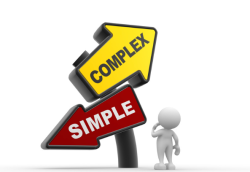Sunday, May 28, 2023

“When communicating with non-technical types there is nothing better than a clear visualization to make your point”
– John Tukey, American mathematician and statistician
When you speak to your audience, don’t make the mistake of projecting your experience with your subject to your audience.
This is a natural tendency that all humans have. We are the total of our experiences in life. But your audience has not had the same experiences.
Take extra care when you talk to non-technical audiences. Use the following methods to get your message across to them.
Use Simple and Clear Language
When speaking to a non-technical audience, it’s important to avoid using jargon, technical terms, and complex explanations that might be difficult for them to understand.
Instead, try to use simple and straightforward language that is easy to understand.
Use analogies and examples that relate to their everyday lives, and avoid using acronyms unless they are widely known.
It is a good idea to present your speech to a practice audience who know little about your subject and ask them to jot down words and technical terms you are using they do not understand. After you have this list, plan to substitute common words for your presentation.
Also, ask your practice audience to write down any complex explanations. Plan to simplify these also.
Be aware that substituting less complex words and further explaining complex explanations will add time to your presentation. Therefore, you may have to raise the level of your presentation and take out some material to stay within the allotted time for your presentation.
So using simple and clear language for non-technical audiences is warranted.
Next, focus on the big picture also.
Focus on the Big Picture
Non-technical audiences are typically more interested in understanding your presentation content’s overall impact and benefits rather than the technical details.
Therefore, focusing on the big picture and communicating how your presentation content can solve a problem or improve a situation is essential.
This can be particularly hard when a technical person speaks to a non-technical audience. This is because the propensity of technical speakers is to provide many details. Watch this tendency when you talk to non-technical audiences.
Instead of details, explain the benefits in terms of outcomes and results that are meaningful to your audience.
Just as speaker entrepreneurs emphasize the transformation of their audiences, in your presentation to a non-technical audience, focus on the beneficial outcomes of your presentation.
Try these three steps when talking to non-technical audiences:
Identify the problem: Understand the problem your audience is facing. What challenges do they have, and how can your product or service help solve them?
Highlight the solution: Once you have identified the problem, focus on the benefits of your solution. Highlight how your offering can help solve the problem and make a positive difference in the lives of your audience.
Use emotional language: Use language that evokes emotion and connects with your audience personally. Highlight the positive feelings that your offering can bring, such as happiness, security, or peace of mind.
So using simple and clear language and focusing on the big picture for non-technical audiences is warranted.
Include visuals also in your presentation. Remember, a picture is worth a thousand words.
Use Visuals to Support Your Message
Visual aids such as graphs/charts, diagrams, and infographics can be very effective in helping non-technical audiences understand complex concepts.
Use simple, clear, and visually appealing visuals to support your message. Avoid overwhelming the audience with too much information or complex visuals that may be difficult to understand.
Below are reasons why graphs/charts, diagrams, and infographics can significantly enhance your presentation
Use graphs and charts: Graphs and charts can help illustrate complex data and make it more easily understandable. Use charts to show trends, comparisons, or relationships between data points. Keep them simple and easy to read, with clear labels and headings.
Use diagrams: Diagrams can help explain complex processes or systems. Use easy-to-read and understandable charts with clear labels and headings.
Use infographics: Infographics are a visually appealing way to present information. Use infographics to summarize data or to explain a complex concept in a simple and easy-to-understand manner.
So, when you speak to non-technical audiences, use straightforward language, focusing on the big picture and using visuals such as graphs/charts, diagrams, and infographics.
Never assume what non-technical people know about your technical subject!
Call to Action
When you speak to a technical audience:
Discard technical jargon – avoid using terminology, technical terms, and complex explanations that might be difficult for them to understand.
Focus on the big picture – non-technical audiences are typically more interested in understanding your presentation content’s overall impact and benefits than the technical details.
Use visuals like graphs/charts, diagrams, and infographics to the maximum extent possible – they help non-technical audiences understand complex concepts.
“The single biggest problem in communication is the illusion that it has taken place.”
– George Bernard Shaw
_____________________________ Frank DiBartolomeo is a retired U.S. Air Force Lieutenant Colonel and award-winning speaker, presentation and interview skills coach, and Professional Member of the National Speakers Association. He was awarded Toastmasters International’s highest individual award, Distinguished Toastmaster because of his outstanding work in public speaking and leadership.
Frank formed DiBartolomeo Consulting International (DCI), LLC (www.speakleadandsucceed.com) in 2007. The mission of DCI is to help technical professionals to inspire, motivate, and influence their colleagues and other technical professionals by improving their presentation skills, communication, and personal presence. Reach Frank at frank@speakleadandsucceed.com and (703) 509-4424.
_____________________________ Don’t miss Frank DiBartolomeo’s latest book!
“Speak Well and Prosper: Tips, Tools, and Techniques for Better Presentations”

Available now at Amazon.com and BarnesandNoble.com